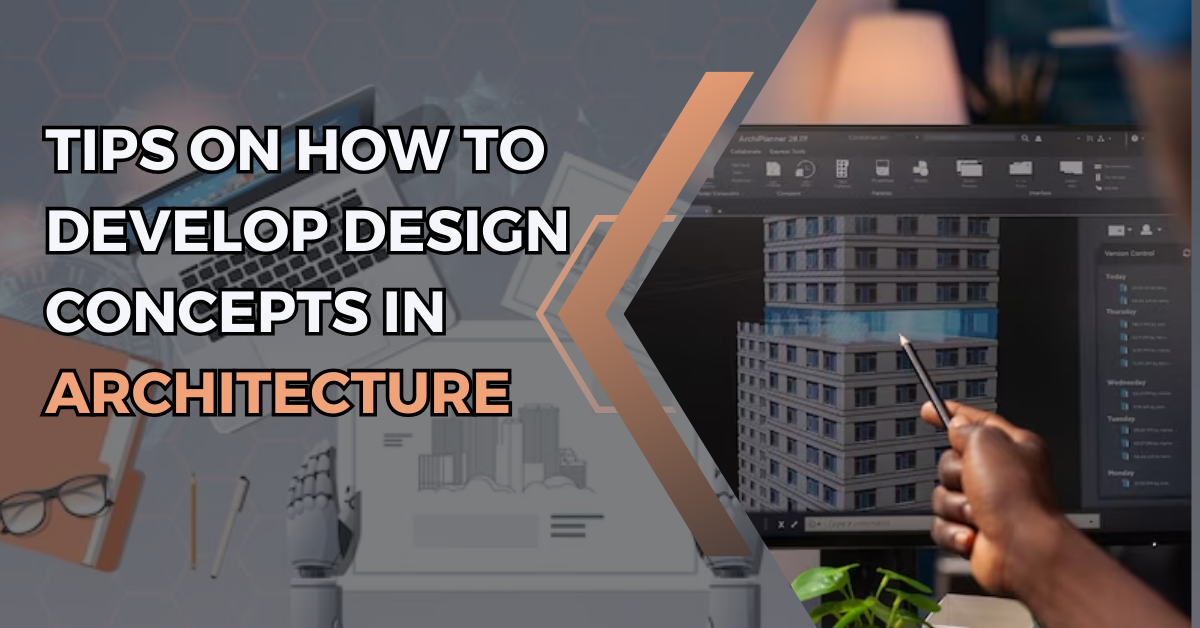“How do you develop architectural concepts?” This is a question we ask all the time as architecture students and architects. For most designs, the concept is a crucial component that defines the idea behind the design, its purpose, and its target audience. In architecture, design ideas can express a message or a specific emotion. But how do we generate a concept? In this article, Adam Shaul will share nine tips on how to develop design concepts in architecture.
1. Read Books for Inspiration
Start by exploring the vast universe of architecture books, where every page is a portal to new ideas. Books like ‘Conditional Design’ and ‘Operative Design’ by Anthony Di Mari are like treasure troves, offering foundational insights into creating spaces. They provide not only the ABCs of design but also share real-life examples and stories. Sometimes, a single picture in a book can spark a brilliant idea in your mind. So, keep those books handy; they might just be the key to unlocking your next groundbreaking concept.
2. Draw Your Ideas
Sketching is an architect’s secret language. It is about letting your ideas flow freely, not about producing well-executed drawings. When you sketch, your brain is actively engaged, and your hand puts those thoughts on paper. It’s a powerful way to express ideas and bring clarity to your design process. Even when you’re not actively looking for a concept, keeping a sketchbook allows you to capture ideas as they come and revisit them later.
3. Learn From Case Studies
Case studies are real-life lessons from the work of experienced architects. Dive into these stories to understand how others tackled challenges similar to yours. Whether it’s through reading or visiting actual sites, these case studies provide insights into design strategies and problem-solving approaches. By incorporating lessons from these studies, you can enrich your own concepts and elevate your architectural solutions.
4. Approach Concepts From Various Viewpoints
The goal of design is problem-solving, not just creating an attractive visual. Consider the context, climate, and culture of the place you’re designing for. Maybe a school needs open spaces for various student activities, or a family home needs plenty of rooms. The materials you use might depend on what’s available in the region. Let these factors actively shape your design concept, making it not just visually appealing but also functional and meaningful.
5. Pause to Get Motivated
Creativity needs room to breathe, says Adam Shaul. If you’ve been staring at your desk for hours, it’s time to take a break. Get some fresh air, take a stroll, or give a friend a call. It’s like hitting a refresh button for your brain. If short breaks aren’t enough, don’t be afraid of longer ones. A workout, a movie, or even helping in the kitchen can do wonders. When you return to your work, you’ll often find that elusive concept waiting for you.
6. Break Down Tasks
Feeling overwhelmed with work? Lists are your secret weapon. Break down your day into tasks, and then break those tasks into smaller actions. You can even assign specific time slots to each task to keep things on track. It’s not just about productivity; it’s about making work feel less daunting. A structured approach to your day can clear the mental clutter, making space for fresh design ideas.
7. 3D Designing for Clarity
Design means that something exists in actual space, not just what you see on paper. Think in three dimensions. Sketch 3D views, create physical models, or use software like SketchUp. Seeing your design in 3D helps you understand how it will actually work in the world. Sometimes, what looks good on a flat plan might not be practical in reality. So, take that extra step to ensure your concept thrives not just on paper but in a living, breathing environment.
8. Check out Design Permutations
Don’t stick to one idea; play around with different versions. Think of it like trying on different outfits. What if your walls were bamboo instead of bricks? Should your house have a courtyard or lots of balconies? This exploration is like a brainstorming session with your own ideas. Each permutation brings a fresh perspective. It’s not about finding the ‘right’ answer; it’s about discovering possibilities and refining your design until it feels just right.
9. Adopt Analytical Design
Data is a powerful tool for creative design. Consider information about spaces, user experiences, or material impacts. Think of it as adding a scientific touch to your art. Software like QGIS or Green Building Studio can help you turn raw data into design insights. Maybe the shape of a space influences how people feel, or the choice of materials affects the overall atmosphere. Let data be the guide that shapes your concept into something not just beautiful but functional.
Takeaway Points
Designing in architecture is like weaving a story. Understanding what people need, exploring ideas from the past and present, and making it eco-friendly. Architects mix shapes, functions, and tech to craft a unique tale. With feedback and teamwork, they shape and reshape until it clicks. Adam Shaul concluded that architects transform ideas into real spaces by juggling old and new, materials, and minute details. It’s a journey from inspiration to a finished masterpiece, blending art and practicality in every corner.


